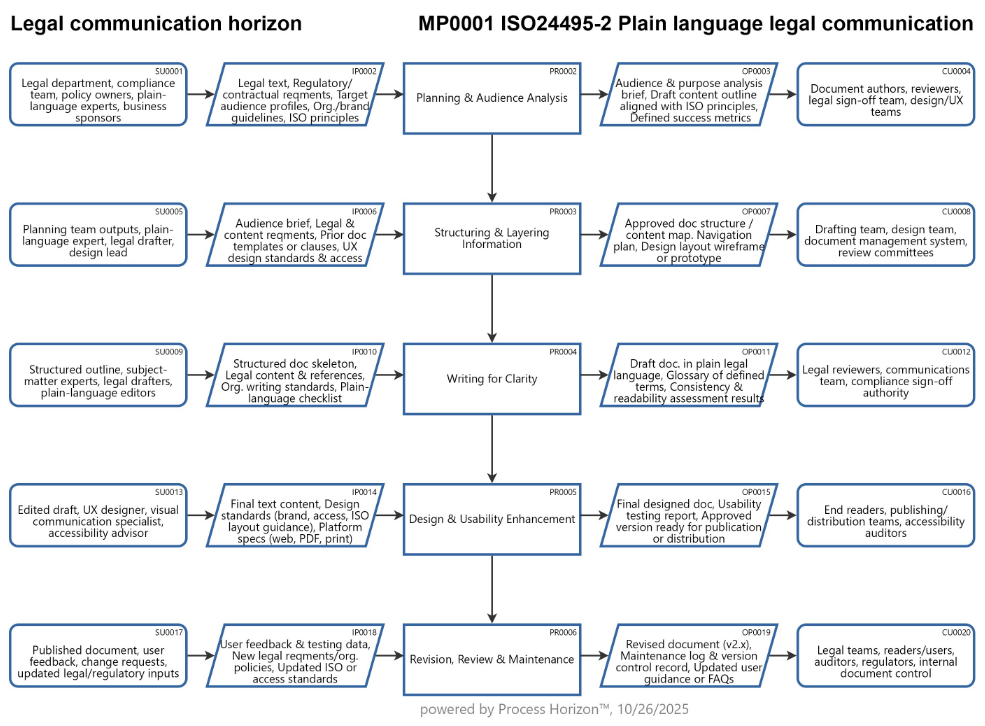ISO 24495-2:2025 Plain language Legal communication principles

If your organization produces legal‐type documents (contracts, terms, forms, rights/obligations notices) and you want to ensure they are readable, accessible & understandable by non-legal audiences, then ISO 24495-2 is highly relevant.
- Legal services & law firms: drafting contracts, terms of service, legal notices, rights/obligations documents
- Government / public sector: legislation, regulations, public facing legal documents, forms for citizens, notices of rights/entitlements
- Healthcare sector: documents combining legal/rights information (consent forms, patient rights notices, regulatory documents) where clear legal communication matters
- Finance & banking, insurance: disclosure documents, policy documents, legal notices, terms/conditions where the reader must clearly understand obligations/rights
- Corporate compliance / HR: internal policies, employment contracts, disciplinary procedures, regulatory compliance documentation
- Management consultancies: project objectives, project summary, statement of work, expected impacts & governance safeguards, T&C's
- Non-governmental organisations / advocacy groups: rights & obligations communications, legal claims, awareness materials targeting general audiences
- Any sector with customer-facing legal documentation: e.g. telecom, utilities, consumer services, where clear legal language improves accessibility and transparency
Statement on Transparency of External Consultancy & Agentic AI Engagements under ESG Principles
To uphold our commitments to Environmental, Social & Governance (ESG) standards and to ensure the organization’s integrity & sustainability as a going concern, we recognize the necessity of partial transparency in all significant external consultancy & Agentic AI engagements.
While maintaining appropriate confidentiality & data protection, the organization will ensure that key information including the purpose, scope, objectives, governance structure, data use boundaries and expected impacts is communicated in plain language to affected stakeholders.
This includes projects involving Agentic AI systems (autonomous or semi-autonomous AI agents) whose operations or recommendations may influence decision-making, resource allocation, or employee experience.
Such partial disclosure strengthens stakeholder trust, supports ethical AI governance and mitigates risks of extractive or opaque practices by ensuring that technological and advisory engagements align with ESG principles, human oversight and sustainable long-term value creation.
Using the following link you can access this sandbox SIPOC model in the ProcessHorizon web app and adapt it to your needs (easy customizing) and export or print the automagically created visual AllinOne SIPOC map as a PDF document or share it with your peers: https://app.processhorizon.com/enterprises/5kNJibqbRiyJzDzX7cjbuRLG/frontend

